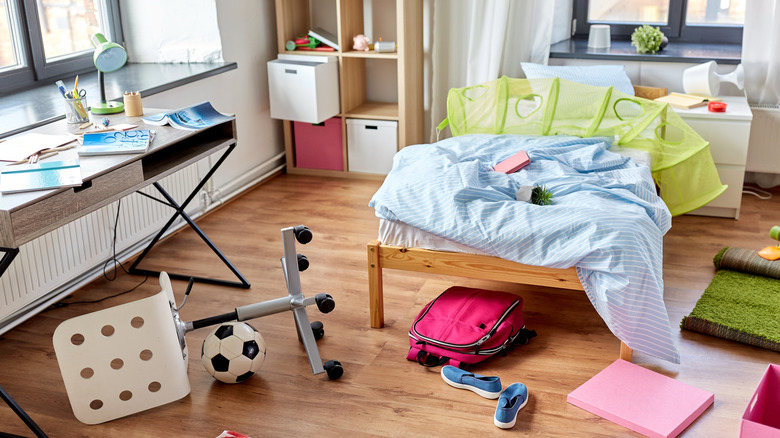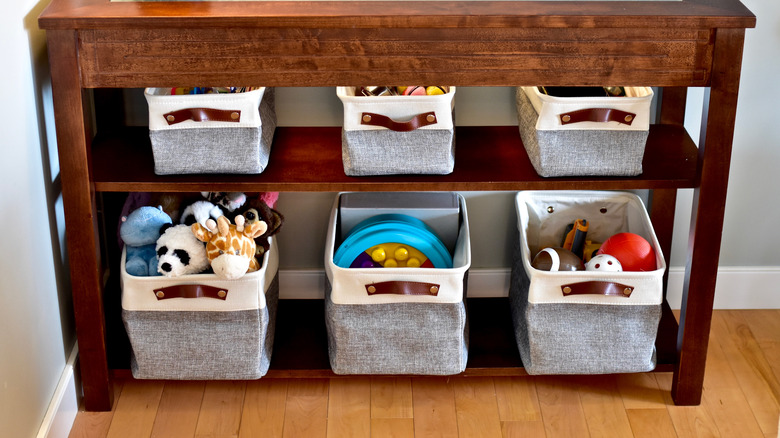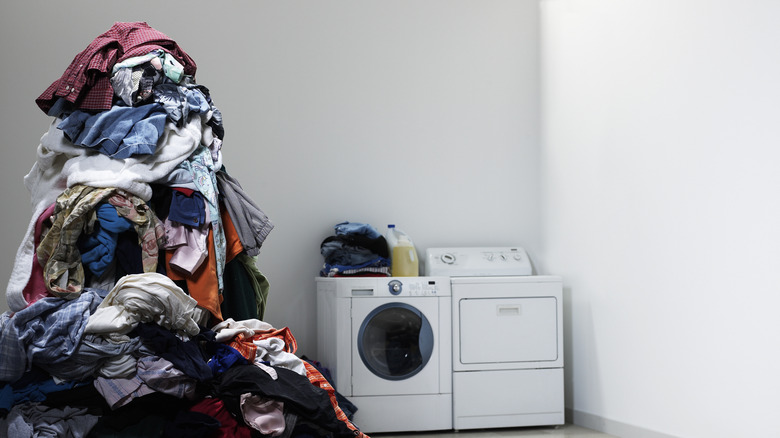Doom Boxes: What They Are, And How They Can Help You Declutter
Each new season seemingly brings a renewed sense of urgency around organizing our home spaces. For many of us, this unending task is easier said than done. It may seem dramatic to call it "doomsday," but sometimes the undertaking can feel just that daunting. On top of that, the societal pressure to live up to a pristine image of what our apartments and homes should look like can foster a self-defeating attitude, preventing us from tackling the chaos in the first place.
According to Atlanta-based professional organizer Judith Kolberg, mental health and organization are intrinsically linked. "You can't divorce feelings of self-esteem and self-worth from these societal expectations, especially for women, of keeping house," Kolberg commented in an interview with The Washington Post. Often, how we feel about ourselves is a reflection of the spaces we keep, but those attitudes change over time and don't have to be negative. A more positive perspective on our spaces and selves is a big reason the ominously titled "doom boxes" have risen in popularity — first in the ADHD community and then across the web, among people of all backgrounds who are looking to feel calm amid chaos without an organizational overhaul.
Categorizing the clutter
The concept of "doom boxes," the organizational craze trending on TikTok, first gained traction among neurodivergent individuals who may not have realized that their "untidy" ways (as some on the outside might call them) are actually brilliant cleaning shortcuts. "DOOM" stands for "didn't organize, only moved," and doom boxes help people categorize their random junk and clutter so that it can be dealt with at a later time. Designating a spot for clutter is a containment strategy that helps keep your living space cleaner overall while you're working up the energy to organize.
Many of us engage in a wide variety of activities throughout the day that all fall into different (figurative) boxes. Some individuals, especially artsy folks, may find that doom boxes work well for managing supplies like yarn, fabric, markers, glue, and more. If you're working on a larger project that requires you to remove many different materials from their original packaging or take important documents out of their clearly marked envelopes, consider labeling small shoe boxes with verbs like "writing," "painting," and "crafting," or broader nouns like "taxes," "correspondence," and "bills." That way, you can throw pencils in with markers, yarn in with fabric, and receipts in with bank statements if you need to quickly clean up your desk or dining room table at a moment's notice. And once you have the boxes, you can use them every time your clutter gets out of hand.
Not just for boxes
People who use the doom box strategy often find that it doesn't have to be confined to boxes. Small piles, shelves, bags, and baskets can also do the trick. Have an enormous pile of clothing on your bed? You don't need to tackle it all right away; sort your socks, shorts, and towels into smaller piles or baskets. This strategy will help you more efficiently fold and organize them into drawers as soon as you have time.
Doom boxes also work well for organizing pet supplies or children's toys. Many cat and dog owners know what it feels like to have to step over random toys, brushes, and treats in order to reach the center of the living room. Small floor baskets where you can toss the toys or supplies for the moment bring quick peace of mind; you can even choose stylish storage products that match or add a little flair to your existing decor!
After all, who wants to feel anxious when stepping into their bedroom or living room — places normally reserved for relaxation and wind-down time? Organizing the chaos into smaller, more manageable clutter is a big first step toward creating more breathable living spaces you will actually want to spend time in (and maybe do some deeper organizing in ... someday).


